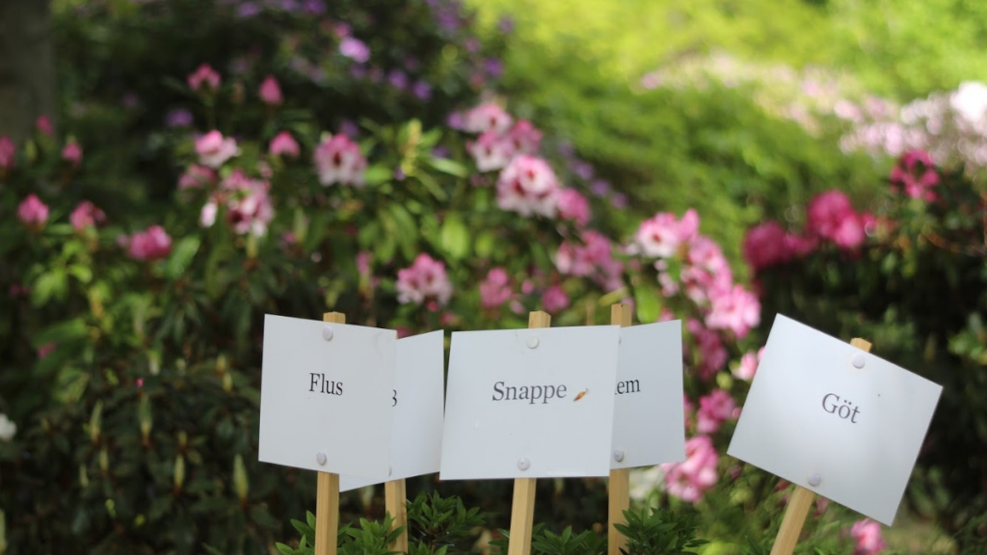Take your children or grandchildren by the hand and set off on a word safari in the beautiful park. You are on a mission to save some poor words that are at risk of extinction. But you can help!
The park at Nivaagaard’s Art Collection is a wonderful place for both children and adults. It is full of large, old trees, hidden tunnels, and winding paths that twist between hundreds of old and new rhododendron bushes. When they bloom in late May and early June, the park is enchanting!
Do words need protection?
The park also has something truly special: a reserve for endangered words. At Nivaagaard, they care deeply about the Danish language and are concerned about several words that are disappearing from use. That is why they have created a reserve in the park where endangered words can stay until they regain a foothold in the Danish language.
Nourishment and love
Around 100 endangered words are displayed on signs placed throughout the park, and you can help give them love, attention, and nourishment together with the museum and park staff. When the museum decides that a word has regained its place in the language, it is released and replaced by a new endangered word.
Meaningful conversations across generations
The reserve for endangered words is designed as a social experience where parents and children, grandparents and grandchildren, young and old can talk about words and their meanings across generations. Come and find a word you would like to help preserve. Take it home in your thoughts, use it, and help bring it back into the language.
Swag & Noia – small linguistic seedlings
The emerging words come from 200 students aged 13 to 19 from Fredensborg Municipality and the rest of North Zealand. The students have participated in writing workshops at Nivaagaard with rapper Pelle Jon Møller and author Iben Claces. After receiving an introduction to the Danish language, they dug into the linguistic soil and discovered new, small linguistic seedlings that have yet to take root.
